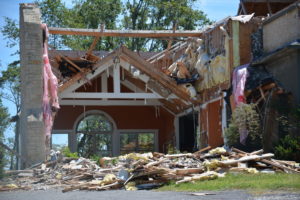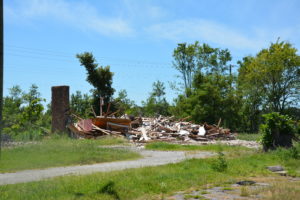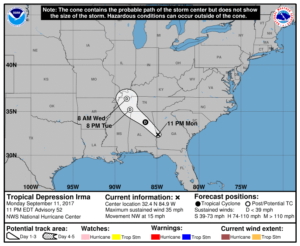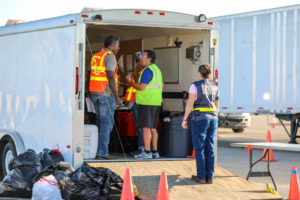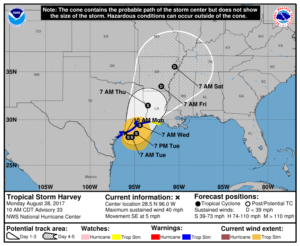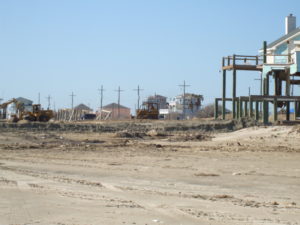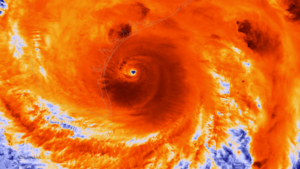Despite the impression many people may have from watching the news, most disasters do not result in a presidential disaster declaration, and the federal government is not always involved in response and recovery. Many smaller disasters, however, result in a state declaration issued by the governor. The threshold for determining whether federal assistance is justified differs by state, with the Federal Emergency Management Agency assuming larger states are capable of handling larger events. Major or catastrophic disasters like Hurricanes Harvey, Irma, and Maria invariably trigger federal assistance, but it may matter whether a tornado occurs in Texas or Delaware. It also matters greatly how much damage it produces. In any event, assessing the toll that nature has inflicted is never simple business.
On April 29 of this year, seven tornadoes rampaged across rural Van Zandt County, east of Dallas, Texas, and parts of some neighboring counties. One of those was an EF-3; another was an EF-4. The scale runs from EF-0, a relatively minor twister, to the very rare but extremely dangerous EF-5. Such a monster struck Greensburg, Kansas, ten years ago, causing enormous damage and nearly wiping the small city off the face of the earth. Fortunately for Van Zandt County, the tornadoes struck mostly in rural areas outside Canton, the county seat. Nonetheless, four people died, and dozens were injured. The state issued a disaster declaration.
Vicki McAlister, Van Zandt County’s public health emergency preparedness coordinator, noted at a disaster recovery workshop in Canton on October 26 that a triage center was established at Canton High School within a half-hour, and that almost immediately “between 35 and 40 ambulances were on the scene.” The triage center, however, had no electricity because of extensive damage to power lines from the tornadoes, which damaged or destroyed about 200 homes in the area, and killed between 250 and 300 cattle. Within two hours, two task forces were conducting search and rescue along every mile of the 35-mile storm path. The county shut down air traffic around the path in order to focus on the effort. McAlister noted that they were soon “swamped by the media,” for whom they set up briefings on a regular basis. It is critical in such situations to keep the public informed through accurate news of the events that follow the disaster.
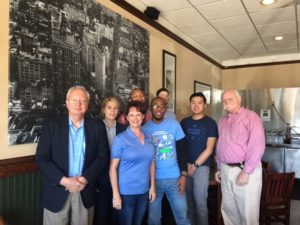
Student interns join me (left), Melissa Oden (to my right), and Texas APA chapter administrator Mike McAnelly (far right) for lunch in Canton the day before the workshop.
The workshop was the result of a collaboration between the Texas Public Health Association and the Texas chapter of the American Planning Association (APA), joint recipients of a $70,000 sub-grant from APA’s Planning and Community Health Center in Washington, D.C., operating under a much larger multi-year grant from the Centers for Disease Control for a program called Plan4Health, designed to foster collaboration between urban planning and public health professionals. The unique feature in this case is its focus on post-disaster recovery public health needs, but It is the third Plan4Health project between the two Texas organizations.
I attended the workshop as the invited keynote, but I played another role as well: I facilitated a group exercise in which those attending broke into five groups, each of which spent time summarizing on an easel sheet where they saw their efforts now, and where they would like to be. Each group reported back to the whole, and those reports became part of the record of the workshop itself. After that, I spoke over lunch.
What was interesting to me, however, especially after listening to Russell Hopkins, the leader of the county’s Long-Term Recovery Group, a body empaneled to handle claims of those suffering losses or injuries from the storm, was how he felt that the county would have been better off having created such a group before any disaster had hit, and how those from neighboring counties echoed that sentiment by indicating they would like to take that step before enduring the ordeal facing Van Zandt. His group was activated in mid-May, and he felt they could have saved weeks of valuable time in advancing recovery in the community if they had been established before the disaster. From my own research and experience, it is clear Hopkins is entirely on the right track, yet few communities think about such contingencies until disaster strikes. Hopkins is also director of Public Health Emergency Preparedness for the Northeast Texas Public Health District.
Much of what TPHA and Texas APA learn from this project will be compiled in a tool kit designed to assist rural communities with recovery planning. Rural communities often face different challenges in disasters from urban areas because local government is small, staff and resources are limited, and training is sometimes less available. The workshop aimed to help shrink that gap. The two sponsoring organizations marshaled important academic resources to advance this mission, including the help of faculty and graduate student interns from the public health program at University of North Texas (UNT), in Fort Worth, and the planning school at the University of Texas campus at Arlington. Six of them were helping to manage the workshop, led by Melissa Oden, a public health professor at UNT and a recent president of TPHA. Also involved was the Northeast Texas Public Health District, based in Tyler. It is expected that the tool kit will become available online early next year.
Ultimately, in my opinion, what matters most in these situations is the peer-to-peer learning between local professionals and recovery volunteers. The latter group had already donated about 20,000 hours of help since April. Some came from outside the area, as often happens, but many were local. These people also help to raise money. Hopkins noted that the recovery effort had raised about $530,000, which was being used to help people rebuild, many of whom had lost a great deal, if not everything. A little more than half were either uninsured or underinsured, according to McAlister. There can be many reasons for this, including poverty and poor health, which can easily lead to financial stress.
 I had noted that rural areas and small towns can have advantages in recovery because of greater social cohesion, but it is also easy to wear out a limited pool of civic volunteers. Hopkins noted that he was “not sure” the members of the Long-Term Recovery Group “knew what they were getting into.” While pointing out the need to make sure claims for assistance are legitimate and that the group was “doing the most good for the most people,” he added that, “We’re frustrating our citizens and ourselves because of the slowness of our work.” The committee spent “long hours wordsmithing” its mission statement to ensure flexibility in responding to people’s needs and was finally ready to distribute money in late June. That circumstance led to his observation that a previously appointed, standing recovery group could have put assistance in motion much sooner. This point surfaced repeatedly when we heard from attendees from neighboring counties. Hopkins’s observation did not go unnoticed. I tried to reinforce it in my lunch presentation by directing people to a Model Recovery Ordinance APA had developed nearly two decades ago, and updated and refined more recently, to help communities accomplish precisely this objective. I suspect that my suggestions did not go unnoticed, either.
I had noted that rural areas and small towns can have advantages in recovery because of greater social cohesion, but it is also easy to wear out a limited pool of civic volunteers. Hopkins noted that he was “not sure” the members of the Long-Term Recovery Group “knew what they were getting into.” While pointing out the need to make sure claims for assistance are legitimate and that the group was “doing the most good for the most people,” he added that, “We’re frustrating our citizens and ourselves because of the slowness of our work.” The committee spent “long hours wordsmithing” its mission statement to ensure flexibility in responding to people’s needs and was finally ready to distribute money in late June. That circumstance led to his observation that a previously appointed, standing recovery group could have put assistance in motion much sooner. This point surfaced repeatedly when we heard from attendees from neighboring counties. Hopkins’s observation did not go unnoticed. I tried to reinforce it in my lunch presentation by directing people to a Model Recovery Ordinance APA had developed nearly two decades ago, and updated and refined more recently, to help communities accomplish precisely this objective. I suspect that my suggestions did not go unnoticed, either.
If anything, other speakers throughout the afternoon continued to reinforce everything said earlier. My long-time friend and colleague David Gattis, formerly the planning director in Benbrook, a Dallas suburb, concluded the afternoon by discussing planning needs in post-disaster recovery. Gattis served just a few years ago as the chair of an APA task force that developed an APA policy guide on hazard mitigation. It built partly on work from the Hazards Planning Center, which I then managed, so we have collaborated a bit over time. He is now applying his expertise in Bastrop, a Texas community that, in recent years, has been afflicted by wildfires (2011), floods (2015), and other events, including impacts this year from Harvey. One issue he emphasized was that, “Short-term responses can have long-term recovery implications.” We do not want to put people back in harm’s way. It is less clear in the case of tornadoes exactly where that is because tornadoes are much more random events geographically than floods or wildfires, but there are lessons to learn, nonetheless, including improved building codes and ensuring access to safe rooms, either within a house or in a nearby community facility. It is particularly important to pay attention to such needs with disadvantaged populations, such as the elderly, children, or the disabled. There is almost always room for improvement if we are looking to build greater community resilience. That includes attention to climate change, even if there may be greater skepticism in some areas. I made my own point very simply regarding climate issues: We cannot solve a problem if we don’t talk about it.
But much of Texas, I believe, is talking about a variety of post-disaster issues, and many communities have sought assistance since Hurricane Harvey. A new normal of public debate may emerge from those discussions, and many of those communities may never be quite the same again. In time, they may be healthier and more resilient as a result.
Note: All photos above provided by TX APA and TPHA (thanks).
Jim Schwab

